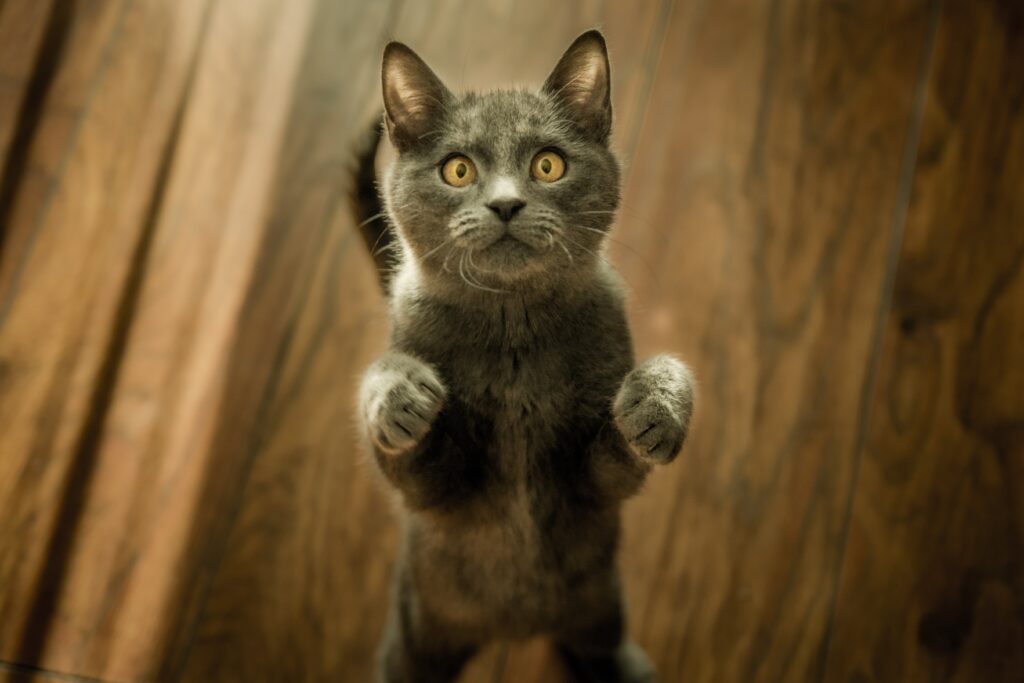Do Kitties Communicate Using Facial Expressions?
Cats, with their enigmatic and often aloof demeanor, have earned a reputation for being mysterious creatures.
While they may not communicate in the same way humans do, they have a rich and nuanced system of communication
and yes, facial expressions are a crucial part of it. In this article, we’ll delve into the world of feline communication
and explore how kitties use their facial expressions to convey their thoughts and feelings.

The Language of Whiskers
Whiskers: More Than Just Whiskers
A cat’s whiskers, or vibrissae, are not just decorative features; they play a vital role in a cat’s communication. When a cat is relaxed and content
its whiskers are typically in a forward position. However, when they are agitated, startled, or feel threatened
their whiskers may be pulled back against their face. This is a clear indication of their emotional state.
Whiskers in Hunting Mode
Watch a cat while it’s hunting, and you’ll notice something fascinating: its whiskers are fully extended forward.
This serves as an indication of their intense concentration and focus on the prey. It’s almost like their whiskers become radar
helping them navigate their surroundings and calculate the perfect pouncing distance.
The Eyes: Windows to the Feline Soul
Slow Blinking
One of the most endearing and heartwarming facial expressions in the feline world is the slow blink. When a cat blinks slowly at you
it’s a sign of trust and affection. They are essentially saying, “I feel safe and comfortable around you.
” Reciprocating with a slow blink of your own is a way to strengthen your bond with your furry friend.
Dilated Pupils
Cats are masters at using their pupils to communicate. Dilated pupils can indicate excitement, curiosity, or even fear.
When a cat is in an aroused state, perhaps during playtime or when they spot a potential prey item, their pupils can become enlarged.
Conversely, when they are content and relaxed, their pupils will be constricted.
The Ears: A Tale of Two Tails
Forward vs. Backward
A cat’s ears are highly expressive and can be likened to two tiny radar dishes. When their ears are facing forward
it usually indicates that they are curious, attentive, or in a playful mood.
On the other hand, ears flattened backward against their head are a clear sign of agitation, fear, or aggression.
The Sideways Ear
Cats also employ a unique communication tactic: the sideways ear.
When one ear is facing forward, and the other is tilted sideways or backward, it often signifies uncertainty or mild curiosity.
It’s as if they’re processing information and haven’t yet made up their minds.
Conclusion
While kitties may not speak our language, they are expert communicators in their own right.
Facial expressions, along with body language, vocalizations, and scent marking, make up their intricate system of communication.
Understanding their facial expressions can help pet owners better interpret their cat’s feelings and needs.
So, the next time you share a moment with your feline companion, pay attention to their whiskers, eyes, and ears.
These subtle but powerful cues can provide valuable insights into the thoughts and emotions of your beloved kitty, strengthening the bond
between you and your furry friend.
FAQs
- Why do cats squint their eyes at me?
- Cats squint their eyes as a sign of trust and affection. It’s a way of saying they feel safe in your presence.
- What does it mean when a cat’s pupils are very large?
- Dilated pupils in cats can indicate excitement, curiosity, or fear, depending on the context.
- Why do cats sometimes flatten their ears backward?
- Flattened ears are a sign of agitation, fear, or aggression in cats. They are trying to protect their ears from potential threats.
- Should I slow blink back at my cat?
- Yes, reciprocating a slow blink with your cat can help strengthen your bond and convey a sense of trust and affection.
- Can I use my cat’s facial expressions to gauge their health?
- Changes in your cat’s usual facial expressions can sometimes indicate health issues. If you notice persistent changes, consult with
a veterinarian for a thorough evaluation.
- Changes in your cat’s usual facial expressions can sometimes indicate health issues. If you notice persistent changes, consult with
